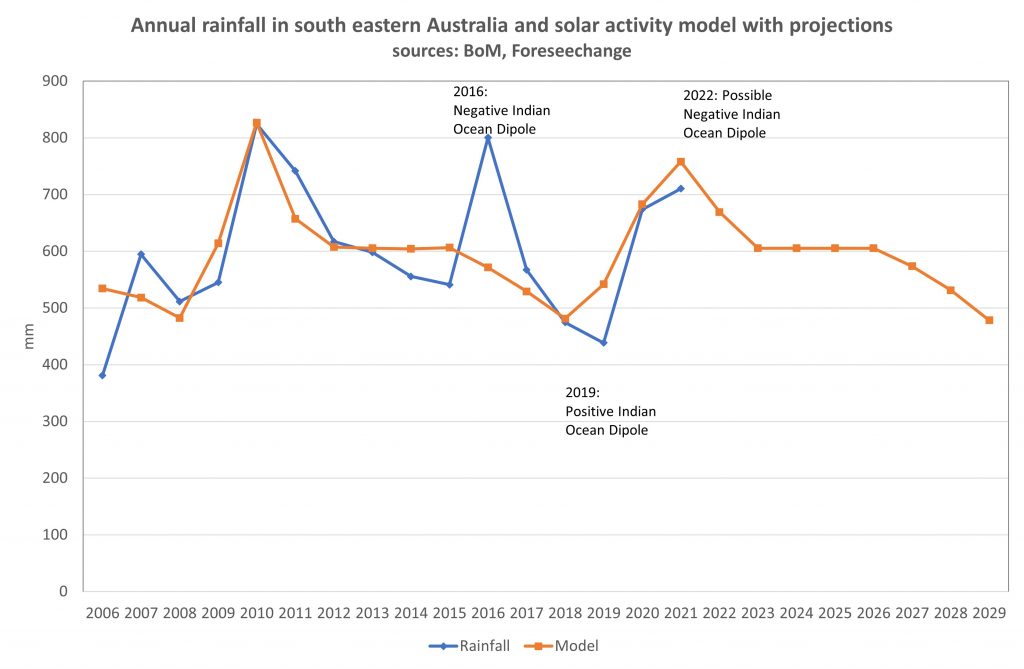Rainfall in southeastern Australia is affected by cycles dictated by astronomical cycles. Climate scientists agree that there are decadal cycles in weather, although they mostly don’t accept that astronomical cycles influence weather.
The attractiveness of linking rainfall to astronomical cycles is that longer-term predictions can be made with some confidence. This means that we can plan for periods of drought and flood several years in advance. This is of great value to farmers, water supply agencies, and emergency management agencies.
A model of annual rainfall in southeastern Australia has been developed by foreseechange and is depicted in the chart below.

Rainfall has been high in 2020 and 2021 and may be high again in 2022, especially if a negative Indian Ocean Dipole event occurs, as seems likely. Negative events lead to higher rainfall and Positive events lead to lower rainfall. Currently, the timing of Indian Ocean Dipole events are not predictable – but we are working on that.
Our forecast is for average rainfall until 2026, followed by a period of falling rainfall to 2030. Given likely higher temperatures by then, the period around 2030 is the next danger period for extreme bushfires. Beyond 2030, there is likely to be a period of higher rainfall for three years.